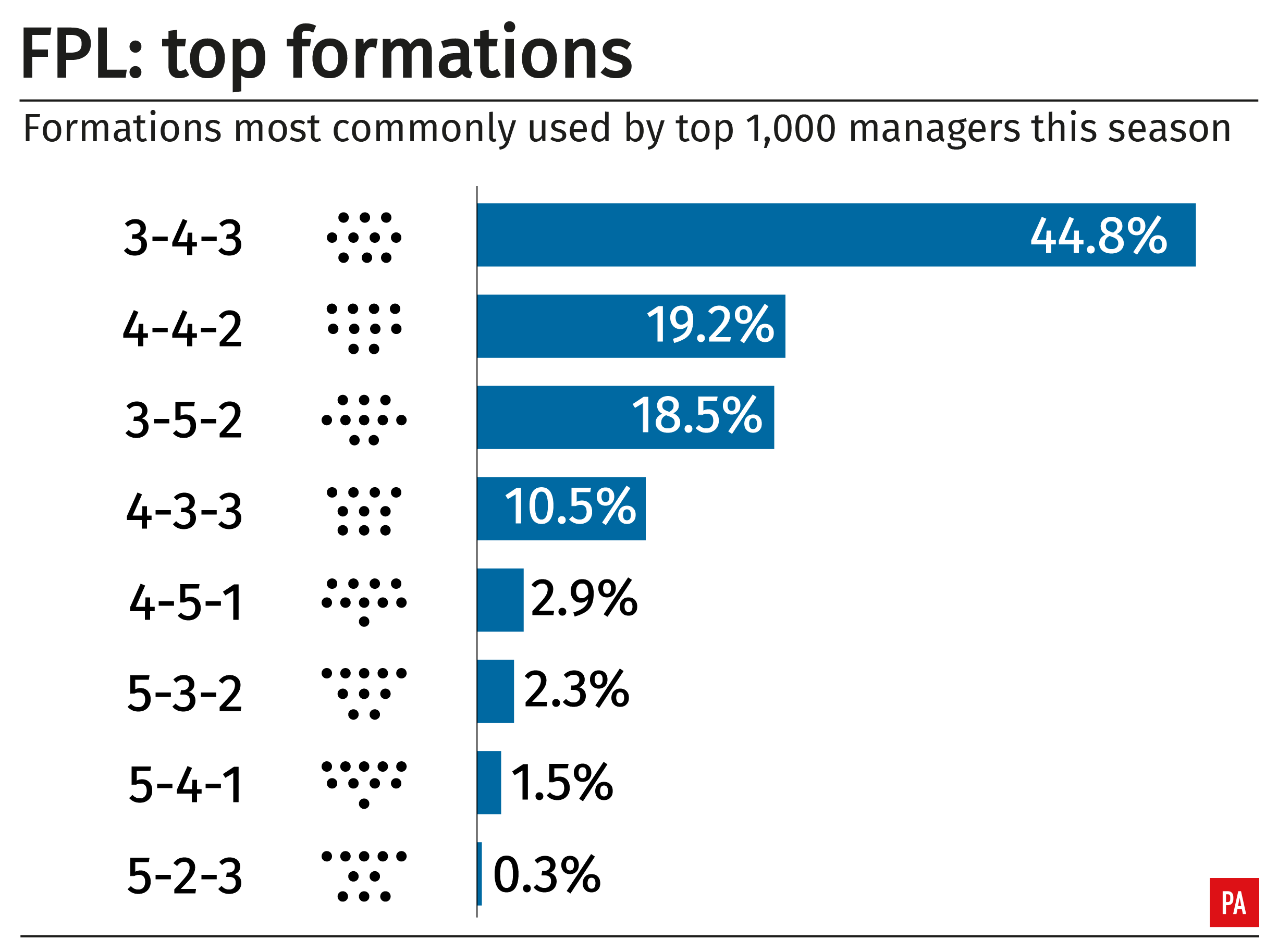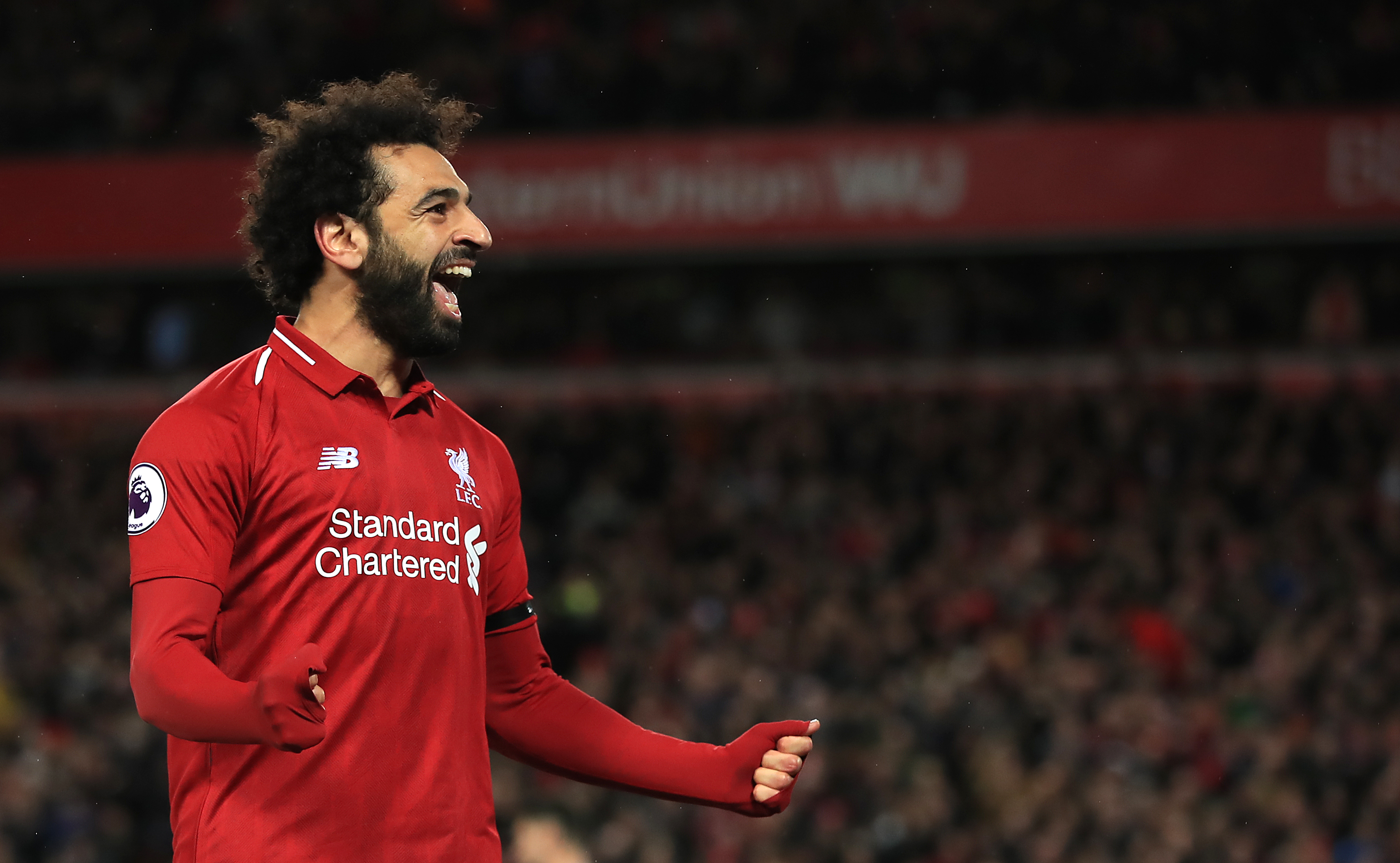The top 1000 Fantasy Premier League managers have proven themselves to be among the elite this season, but which tactics have they used to get there?
Selecting 15 players for a squad might seem the most important aspect of any FPL season, but once those players are in place, what happens next?
Formation

The most popular formation among the top 1000 has been 3-4-3, used 44.8 per cent of the time, which makes sense given defenders typically score fewer points than midfielders and forwards.
Perhaps surprisingly then 4-4-2 has been the next-most popular formation at 19.2 per cent, with managers leaning on a four-man defence and leaving a player from each position on the bench.
Unsurprisingly the least-used formation has been 5-2-3, although the average points earned by the top 1000 from this formation (57.3) is almost exactly the same as the average points earned from 3-4-3 (57.9).
While at first glance this might suggest formation has no bearing on points, what it actually illustrates is that the top FPL bosses recognise that each formation is useful at certain points in the season.
Captaincy

Once the formation is in place, how else do the top 1000 maximise their points returns? Captaincy picks can have a huge bearing.
The rest of us further down the leaderboard might presume the key is to double the points of differential options, but the opposite in fact appears true.
The top 1000 captained one of Mohamed Salah or Sergio Aguero 59 per cent of the time this season – with the former being the top FPL points scorer so far, and the latter being the most selected player, the cream of the crop are not taking many risks with the armband.
The drop-off is quite sharp after that, with Harry Kane the next most-popular captain at 8.2 per cent, before Eden Hazard at 7.5 per cent and Raheem Sterling at 6.1 per cent.
Spending

Working out which positions to invest your money in as the season goes on is also crucial to moving up the leaderboard, so where have the top 1000 directed their cash?
This season the best in the business have not invested in expensive goalkeepers, with their average starting goalie worth just £4.9million.
Move further up the pitch though and it becomes clear that those managers have been happy to invest in one star player per position, rather than spreading their money evenly among picks.
On average £12.7million has been spent on these managers' first-choice midfielder, with £10.8million spent on their first-choice forward.
Finally, the top 1000 do not bin their third substitute, spending on average £4.9million when they could have spent less.
Instead of saving money which could have been spent on the starting XI, they have invested in a better quality of player on the bench.
ga('create', 'UA-72310761-1', 'auto', {'name': 'pacontentapi'});
ga('pacontentapi.set', 'referrer', location.origin);
ga('pacontentapi.set', 'dimension1', 'By Max McLean, Press Association');
ga('pacontentapi.set', 'dimension2', '4634c680-696b-4427-9680-91fefbd02acc');
ga('pacontentapi.set', 'dimension3', 'paservice:sport,paservice:sport:football');
ga('pacontentapi.set', 'dimension6', 'story-enriched');
ga('pacontentapi.set', 'dimension7', 'composite');
ga('pacontentapi.set', 'dimension8', null);
ga('pacontentapi.set', 'dimension9', 'sport:football');
ga('pacontentapi.send', 'pageview', { 'location': location.href, 'page': (location.pathname + location.search + location.hash), 'title': 'Top 1000 tactics: How the best FPL managers set their teams up'});







